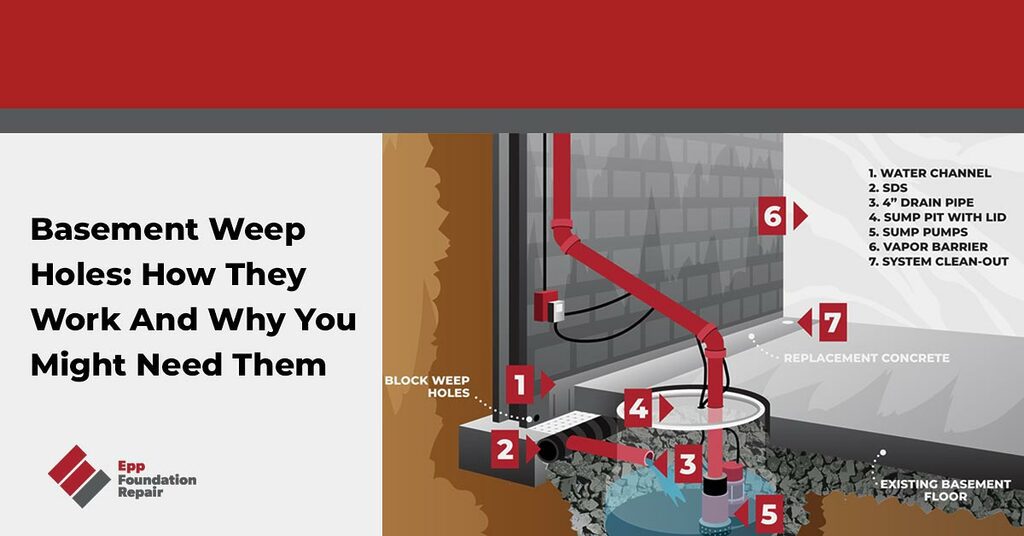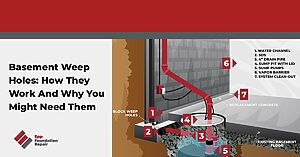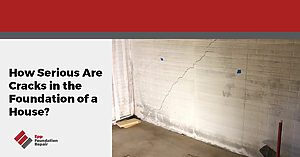Basement weep holes might be a solution if you have a wet basement. A wet basement is a sign water is building up in the soil outside the walls of your home with nowhere to go. If the water doesn’t have a way to drain off, hydrostatic pressure will build up and eventually start pushing against the foundation walls. Hydrostatic pressure can cause a foundation wall to bow inward and even crack. Of course, anytime there’s excess water in the soil around the foundation, water could get into your basement.
Basement weep holes are a basement waterproofing solution that provides an exit for water that has built up inside the blocks. In other words, basement weep holes give the water inside the hollow blocks a way out before it leads to trouble.
Note that the weep holes are not drilled all the way through the block to the exterior of the soil. They are only drilled into the hollow cavity within the blocks themselves, allowing any water that builds up inside the block to escape. This prevents the water from filling the cavities completely and causing the water to weep through the block or mortar joints.
What are basement weep holes?
Basement weep holes are drilled into a basement wall to allow water into the basement to waterproof the basement. Yes, you read that right. Sounds counter-intuitive, doesn’t it? Stay with us. We’ll explain how this works.
Some foundations are built using concrete masonry units, also known as CMUs, cinder blocks, or concrete blocks. Foundation walls built using CMUs are more porous than poured concrete foundation walls making it easier for water to enter the basement.
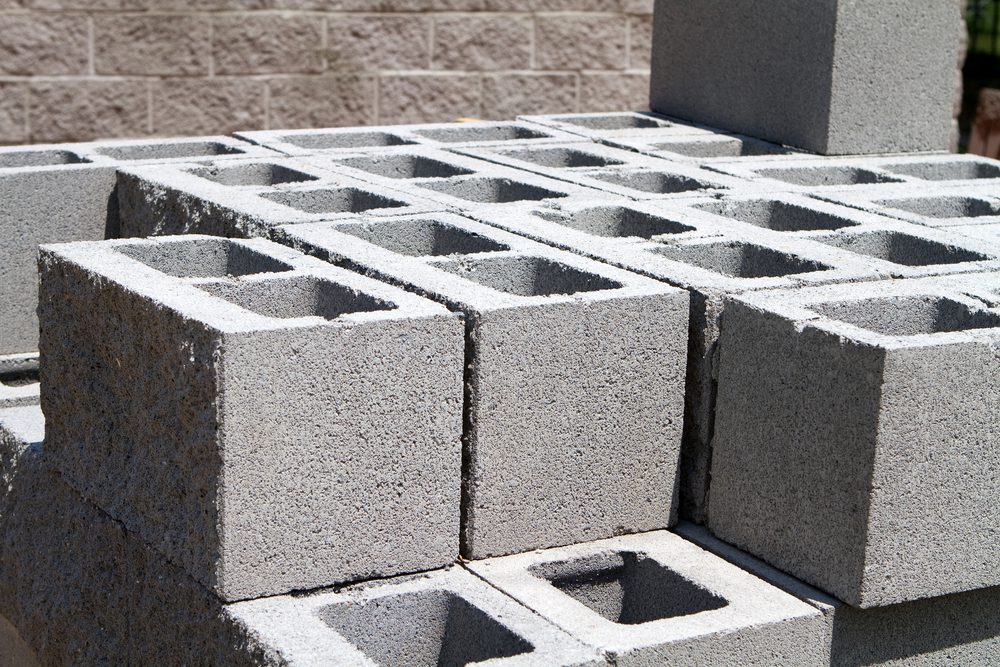
Even though CMUs are covered with tar during construction, the tar coating only lasts for 30-40 years. When the tar degrades, water gets into the CMUs and gets trapped because the blocks are hollow. From there, the water will find a way out along the path of least resistance. In most cases, this will be into your basement. Basement weep holes are small holes drilled into the basement wall at the base of the foundation to give the water a way to escape.
Basement weep holes work alongside an interior drain tile system
Of course, basement weep holes don’t work alone. If they did, your basement would be full of water. Basement weep holes direct the water into an interior drain tile system. The water gets channeled into a sump pit and released away from your foundation via a sump pump.
Why you might want basement weep holes
You might want basement weep holes if you have a concrete block foundation and want to use your basement as a dry, comfortable living space. Or, maybe you already have water leaking into your basement. Whatever may be the case, basement weep holes along with an interior drain tile system is a waterproofing solution that will keep your basement dry permanently.
For more information on drain tile systems, see Basement Drain Systems: The Secret To A Dry Basement.
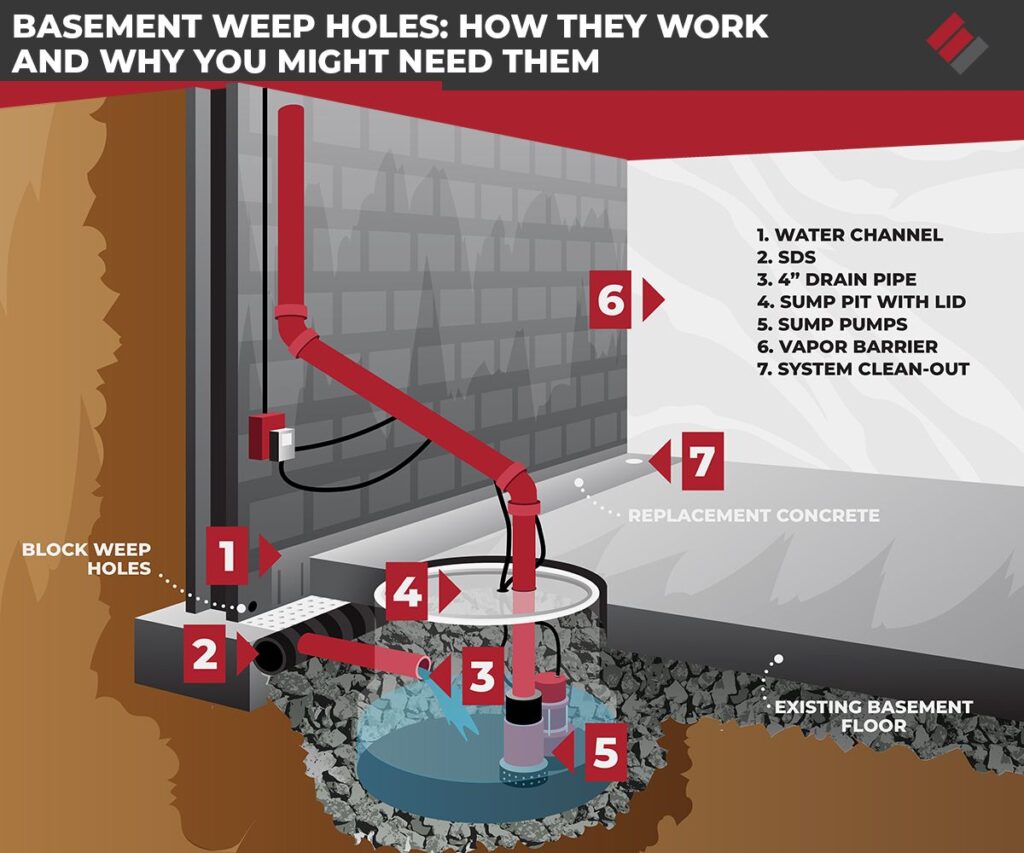
How do basement weep holes work?
Basement weep holes are drilled near the bottom of your inside basement wall, at the lowest level of blocks. This will allow water to escape the blocks and flow into the interior drain tile system.
A drain tile system – there are two types, interior, and exterior – is a gold standard when it comes to basement waterproofing. They are easily installed at the time of construction. However, they can also be installed in existing homes. It’s a major construction project, though, so we don’t recommend that you do it yourself.
Check out our blog post about – French drain basement
The installation process for an interior drain tile system in an existing home is as follows:
- Your basement floor is broken up using a jackhammer.
- The contractor then digs a sump pit and a shallow trench along the inside perimeter of your basement.
- Next, a perforated drain pipe is placed into the trench and covered with gravel.
- Finally, the floor is replaced. If you’re not planning to use your basement as a living space, you might opt to leave the gravel-filled trench open.
Now, any water trapped inside the concrete blocks that make up your foundation wall can weep out and into the interior drain tile system. It gets channeled into the sump pit, where it will then be expelled away from your foundation via a sump pump.
Our blog has several in-depth articles on drain tile systems. This article will get you started: How Does A Drain Tile System Work?
Nobody wants a wet basement, even if they’re just using the basement as a laundry room. It feels unpleasant, smells bad from mold growth, and a certain amount of unhealthy air from the basement makes its way into your home upstairs.
However, a wet basement is more than just a nuisance and health concern. It’s also a sign that there’s excess water built up in the ground around the foundation, which means hydrostatic pressure has built up and is pushing against your foundation walls. If the pressure isn’t relieved, one or more walls could start to bow inward and even crack. That will mean an expensive foundation repair.
Basement weep holes along with an interior drain tile system will keep your basement dry and comfortable and ensure that your foundation remains strong.

